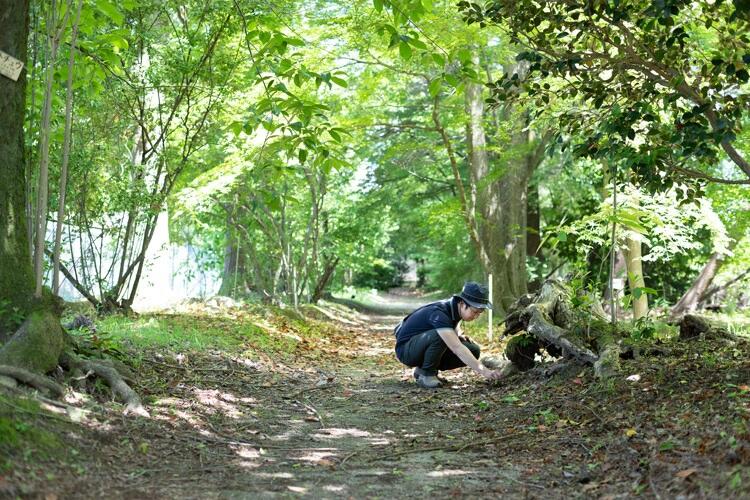
This "Treasures from under the ground," article focuses on soil microorganisms that live underground. Recent research on forest microorganisms has shown that the networks formed by mycorrhizal fungi, which live symbiotically with trees on their roots, influence tree growth and stand composition dynamically. Program-specific Associate Professor Kohmei Kadowaki of the Hakubi Center for Advanced Research/Graduate School of Agriculture at Kyoto University is fascinated by these fungi and works on research at the forefront of the field.
Diverse organisms make connections
When you enter a forest, you can see that there are a wide variety of organisms living there. For example, acorns take root and grow on the forest floor, spreading their leaves and attracting insects that feed on them. Large trunks create a vibrant feeding ground where beetles and various butterflies, such as the great purple emperor gather in the sap.
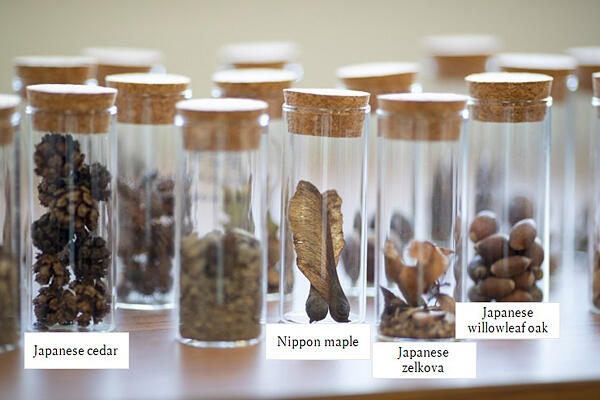
When the ground is covered with fallen leaves, earthworms and soil microorganisms become more active and decompose the fallen foliage, resulting in the molecular components being returned to the soil and becoming a source of nutrients for newly sprouting plants. Trees also provide a habitat for squirrels and other small animals, birds, and insects. The cavities created in the central decomposed part of dead trees are used by woodpeckers and owls, whereas the cavities at the base of trees are used as nests by badgers. In this way, various organisms have made connections around trees simply by being on the ground.
So, what goes on in the underground areas that we cannot see? It is well known that plants absorb water and nutrients from their roots. Mycorrhizal fungi are microorganisms that live on the root tips and associate symbiotically with plants, providing them with necessary nutrients such as nitrogen and phosphorus in exchange for the sugars produced through photosynthesis by the trees. Recent research has begun to show that the microscopic soil microorganisms below the ground significantly impact various macroscopic features above the ground, such as the structure and species composition of forests.
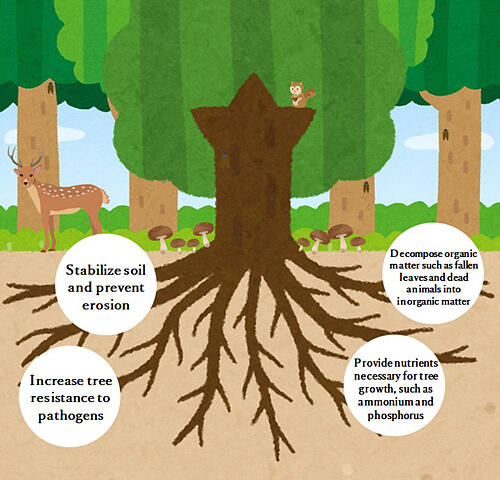
Two species of mycorrhizal fungi coexist in symbiosis
Kadowaki conducts research on trees and soil microorganisms. "I have loved living things since I was a child, and I wanted to be involved in research on living things as an adult. I was particularly interested in ecosystems where organisms interact with one another," he commented. Kadowaki is currently working on community ecology, a field of study that uncovers the relationships between diverse organisms. Clarifying the relationships between trees and mycorrhizal fungi is one of the pillars of his research.
"Tree roots do not extend down to a depth equal to the height of the tree. Instead, they extend into the soil at a relatively shallow depth, with mycorrhizal fungi living symbiotically at the tips of the roots. Ectomycorrhizal fungi and arbuscular mycorrhizal fungi are typical examples," said Kadowaki.
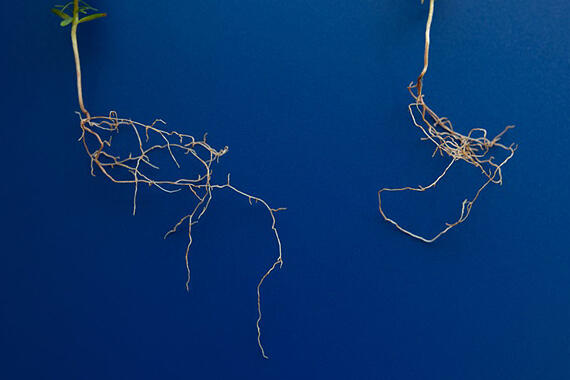
Ectomycorrhizal fungi, one of the two types of mycorrhizal fungi, are found on the surface of tree roots and do not penetrate the cell's interior. Instead, they exist symbiotically with the plant by growing mycelia that follow the maze of gaps in the cell walls. Therefore, fuzzy mycelia can be seen on the surface of the roots, and some of them appear as mushrooms on the surface of the soil. By contrast, arbuscular mycorrhizal fungi invade the root cells and live symbiotically within the plant, leaving the root surfaces smooth. Moreover, these fungi do not appear as mushrooms above ground.
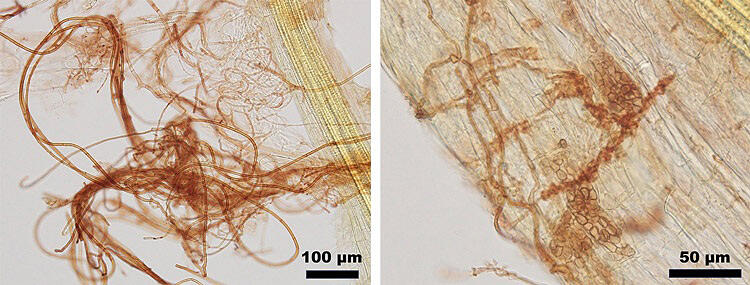
Kadowaki explained, "In forests, there are two types of trees: those with arbuscular mycorrhizal fungi, such as cherry, camellia, maple, and camphor; and those with ectomycorrhizal fungi, such as pine, oak, Castanopsis, and hornbeam." He added, "Previous research has shown that trees living symbiotically with arbuscular mycorrhizal fungi are more likely to grow seedlings of different species, whereas trees living in symbiosis with ectomycorrhizal fungi are more likely to grow seedlings of the same species."
Pine forests exist, but cherry forests do not
However, the detailed mechanism of how mycorrhizal fungi in symbiosis with the parent tree affected seedling growth was unknown. Therefore, Kadowaki and his colleagues conducted a large-scale forest simulation experiment to evaluate the effects of mycorrhizal networks by studying the growth of seedlings. The DNA in the soil was also sequenced to determine which microorganisms formed the network.
It was found that for the parent trees living symbiotically with arbuscular mycorrhizal fungi, "negative feedback" occurs around the roots, inhibiting the growth of same-species seedlings. By contrast, for the parent trees living in symbiosis with ectomycorrhizal fungi, "positive feedback" occurs around the roots, promoting the growth of same-species seedlings. Additionally, DNA sequencing provided evidence that the fungus had been transferred from the parent tree to the seedling and was thus shared.
Kadowaki explains the findings as follows: "There are two types of trees: those that grow together to form a forest and those that cannot grow without human intervention. For example, pine forests are common in every wild mountain, but cherry forests do not occur naturally, and the types of mycorrhizal fungi that exist at the various locations are responsible for this difference. Around the roots of pine trees that live symbiotically with ectomycorrhizal fungi, the symbiotic fungi accumulate and promote the growth of seedlings of the same pine tree, resulting in the formation of a pine forest. By contrast, around the roots of cherry trees living in symbiosis with arbuscular mycorrhizal fungi, pathogenic fungi accumulate and inhibit the growth of cherry seedlings, resulting in the growth of various trees. By creating and analyzing forest ecosystems from the soil, we were able to confirm the dynamic influence of underground mycorrhizal networks on forest formation."
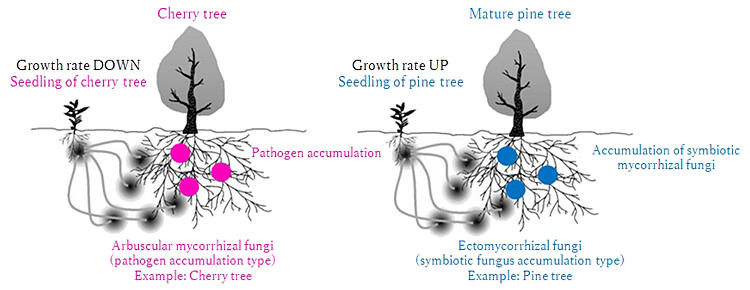
(image provided by Kadowaki)
Kadowaki's research has also shown that Japanese red pine and Japanese cherry trees (Yamazakura) are incompatible. When Japanese red pine seedlings are planted under Yamazakura, the growth rate is almost 50% lower than when the seedlings are planted under Japanese red pine trees. Additionally, when Yamazakura seedlings are planted under Japanese red pine trees, the growth rate is reduced by nearly 90% compared with when they are planted under Yamazakura. According to the study, this trend can also be seen in various combinations of tree species, such as between Japanese red pine and Japanese maple trees and between loose-flower hornbeam and Yamazakura. When the type of symbiotic fungi does not match, growth is generally poor. This is because seedlings grow better when they inherit mycorrhizal fungi from parent trees living in symbiosis with the same mycorrhizal type. Kadowaki calls this the mycorrhiza type-matching effect.
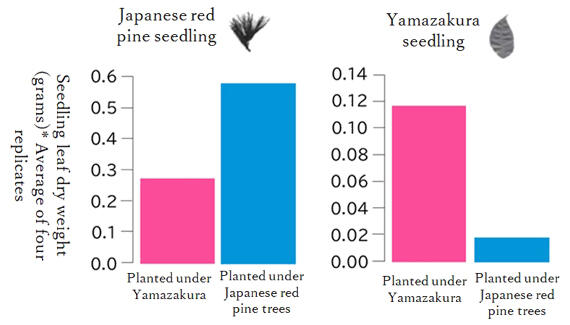
(provided by Kadowaki)
Complex interactions among trees
Although it is now known that the soil fungi associated with different tree species differ and that these differences are closely related to seedling growth, the experiment still does not fully replicate a real forest. To demonstrate the effect of mycorrhizal networks, Kadowaki and his colleagues are analyzing data from the "Forest Inventory Survey" conducted at Kyoto University's Ashiu Forest Research Station in northern Kyoto Prefecture.
The Forest Inventory Survey involves the examination of all trees native to the target forest that have grown above a certain level. The density of trees native to the Ashiu Forest Research Station indicates whether positive or negative feedback among tree species is at work. The results were not necessarily consistent with the mycorrhizal type-matching effect found in the experiment. Complex interactions occur among forest trees, and unraveling the forest ecosystem is difficult.
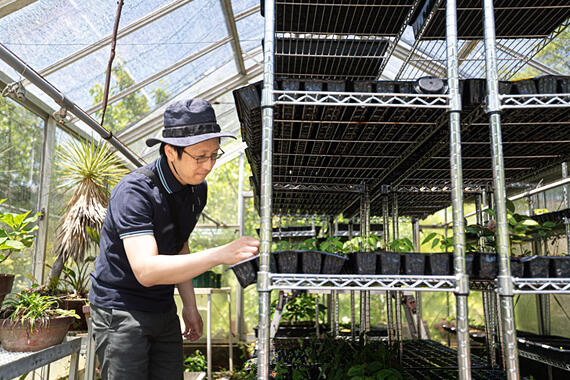
The key to unlocking the mysteries of the unknown
Kadowaki commented, "Unlike engineering or medicine, community ecology does not immediately benefit society with the results of its research. However, that does not mean it is irrelevant." Understanding how mycorrhizal networks work will help nurture the forests of the future.
"Many people may think that if they cut down trees and leave the land bare, they can just plant trees, but various studies have shown that once trees are lost, the underground microorganisms do not recover quickly, even if more trees are planted." Kadowaki said. "However," he continued, "with our knowledge of how microorganisms and forests work, we can make a variety of suggestions, such as effective locations and planting sequences for creating a diverse forest of trees when trying to restore a lost ecosystem."
Kadowaki believes that studying forest ecosystems means learning about the diversity of living organisms and how they, including humans, interact with nature and live. Therefore, the deeper this study goes, the more "interesting" it becomes! Theories are connected to reality when hypotheses made by students are proven or when mycorrhizal fungi living symbiotically with roots are found through micrographs or DNA analysis.
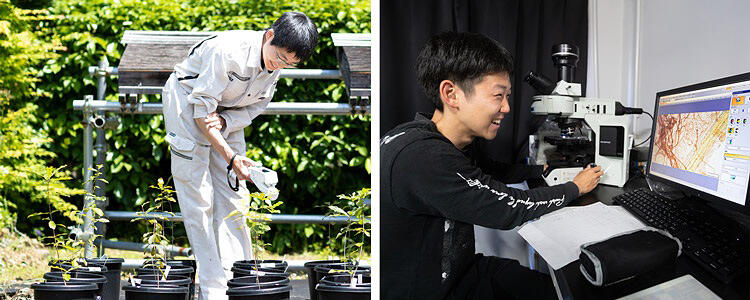
Although the underground networks of mycorrhizal fungi are invisible to the naked eye and therefore receive little attention, they have a major impact on the growth and death of above-ground forests. The unknown world below the ground seems to hold the key to unlocking the mysteries of ecosystems.
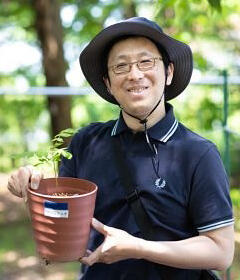
Profile
KADOWAKI Kohmei
Program-Specific Associate Professor, the Hakubi Center for Advanced Research and Graduate School of Agriculture, Kyoto University.
In 2007, he completed a master's degree in Department of Applied Biological Sciences at the Graduate School of Agriculture, Kyoto University. D. (Biological Sciences) from the School of Biological Sciences at the University of Auckland in 2011. After working as a researcher at Department of Biological Science, Florida State University, a JSPS Research Fellow (PD) at Kyoto University's Graduate School of Human and Environmental Studies, a postdoctoral researcher at Kyoto University's Center for Ecological Research, and a program-specific assistant professor at the Research and Educational Unit for Studies of the Connectivity of Hills, Humans and Oceans, he has been in his current position since 2021.
Original article was provided by the Science Portal and has been translated by Science Japan.




